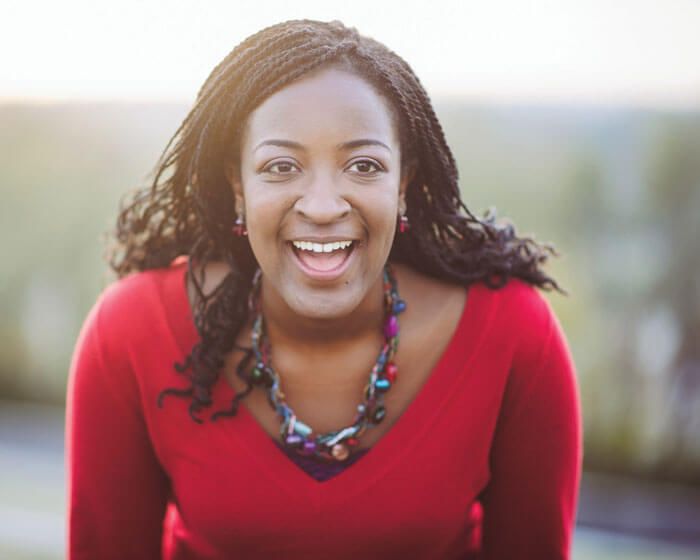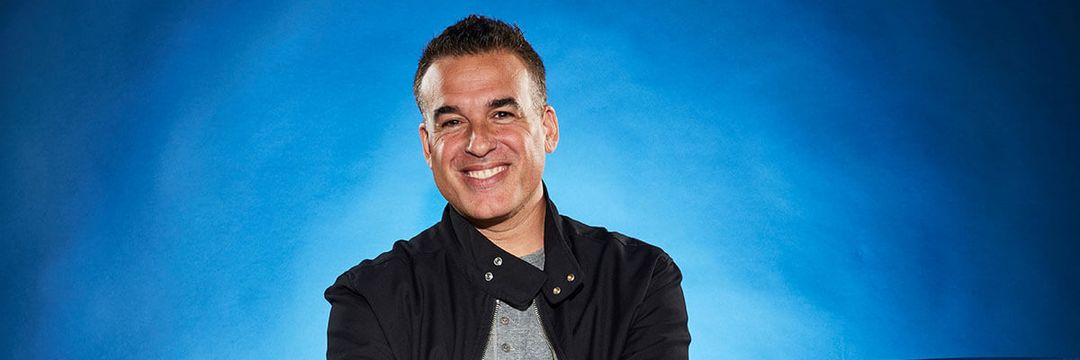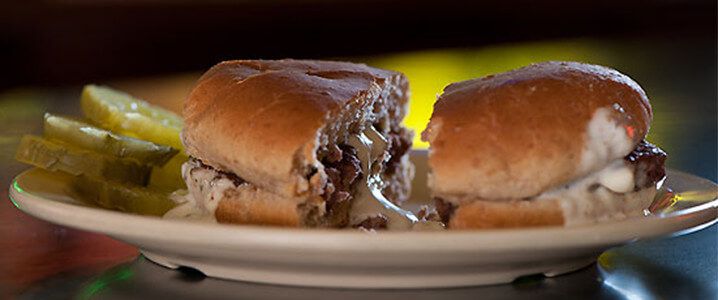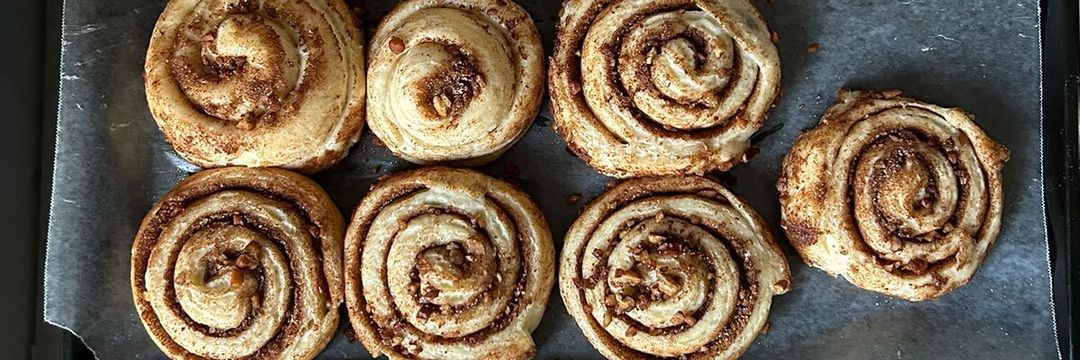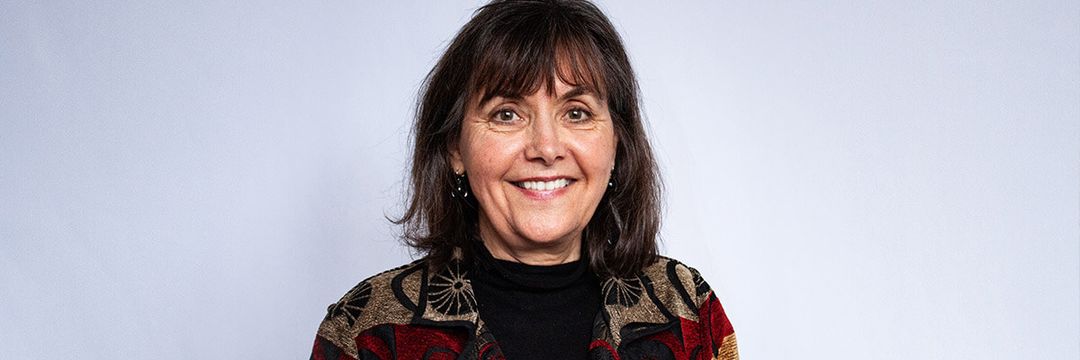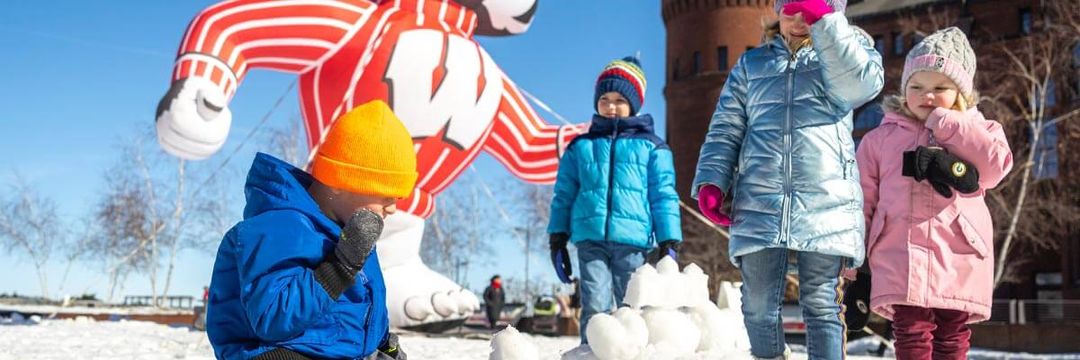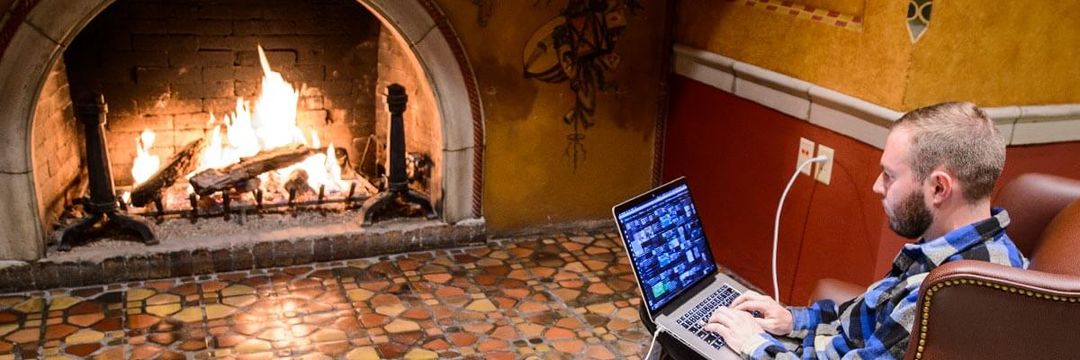10 questions with an alumna on the move
(expanded from the Summer 2014 edition of Badger Insider)
Erin Canty is a professional greeter. That is, she’s a writer at Hallmark, where she creates copy for greeting cards, as well as children’s books, screenplays, and all sorts of other products designed to, as she says, “connect people on an emotional level.” Canty has deep UW — and WAA — roots. She grew up in Madison and followed in her brother’s Badger footsteps.
While pursuing her journalism and communication arts majors, she was an active member of the Wisconsin Alumni Student Board (WASB), and she was so inspired by her WASB experiences that she aspired to become a college adviser. Canty returned to UW-Madison for a master’s degree in educational leadership and policy analysis and joined Teach for America. Then, in 2010, Hallmark called.
What sparked your interest in greeting cards?
When I was little, I had my own little card company, Elephant Cards, or E.C. [also her initials], because an elephant never forgets! I always liked reading cards, but I didn’t really start sending them until grad school. For the first time, a lot of my friends had scattered around the country, and I became a Hallmark consumer, buying a lot of cards and laughing in the aisle when I was supposed to be studying. And then I wondered, how do people get these jobs?
How do people get those jobs?
I went online and saw they had an opening. You had to fill out this set of greeting card exercises. I did it, turned it in and didn’t hear anything for two years. I had written it off, like, “It’s fine; they must get thousands of these. No biggie.” I finished grad school and started teaching. I had moved on.
Then out of the blue, a recruiter called me and said, “We still have your portfolio. Would you like to complete another one?” They gave me a week, and [then] they said they’d like to fly me out to Kansas City for an interview.
Why do you like to send cards to your friends and family instead of, say, emails?
They’re more personal. There’s something about getting mail that’s not a bill or junk. It’s fun for me to send and for them to receive. Then I started getting mail back, and once I started sending more cards, [my friends] got excited about sending even more — it started something. You know the joy you get from receiving them. I wanted to give that to other people.
Did your teaching experience give you insight into how to write for kids?
Yes. I taught second grade [in Jacksonville, Florida], so I’ve read thousands of kids’ books, and I was excited to get to write my first one and know that it was going to be published. When we write for kids, I think a lot of times we don’t give kids enough credit. If I get pushback from editors about making an ending that isn’t happy enough, I say, “Well, they can handle it.” [Children] face problems in their day — granted, tiny problems — but it’s okay to reflect similar problems that they may have in their lives in the stories. [Because of my background,] I think my opinion may go a little further than it may have otherwise.
Have you gotten any feedback from teachers or children on your books?
I send copies of my books to my teacher friends for free. My first was a couple of years ago, called Benny’s Big Break, about a monkey who learns to play the drums. The second one was Cupig’s Shuffle, and that did really well — probably because it was sold next to a singing, dancing pig.
A lot of students sent thank-you messages back, and they asked great questions, like “Do you know Cupig?” or “How did Cupig learn to dance?” I got all of these fantastic five-year-old questions, drawings and scribbles, with notes from their moms about what they meant.
Are there any particular themes or subjects that you really enjoy writing about for kids?
We have a lot of licensed characters that we write for, and one of my favorites is Doc McStuffins. She’s a small child who is African-American. Her mom is a doctor; her dad is a stay-at-home parent; and she’s a doctor to her stuffed animals. All the toy injuries mirror things that happen to kids, so kids can feel more comfortable about going to the doctor. The cards we work on for that [are] probably my favorite license to write for.
Are there any occasions that you dislike writing about?
I’m not very strong at writing for sympathy. There are a lot of Hallmark writers who are very good at it. But it’s hard for me to get in that space and remain authentic. It’s an occasion we’re all going to experience at some point, and it really needs to have the weight it deserves. I can do “care and concern” or “encouragement,” but when it’s a “sorry for your loss,” that gets a little hard for me to do.
What’s an average day like for you?
There isn’t one, and that’s great. Hallmark is excited about encouraging our creative team to stretch and grow. There’s always something going on. There are 38 [Hallmark staff writers], and we work on a whole host of things. We’re on a writing project for about a week or so at a time.
We have our primary projects, and then we have other projects. I lead humor-writing brainstorms, and this year I ran our screenwriting boot camp, where we made short films that [were] screened at a theater. I’ve written four or five screenplays for things in house.
What inspires you? Do you ever run out of things to say?
In the mornings, I do what I call a “tour of the Internet” to see what people are laughing at or talking about so I can be in the know. We have our own creative research library, with every magazine you could ever imagine. There’s also a lot of art in the Hallmark collection. People come in and take guided tours. So we can go there and be inspired for [upcoming seasons and occasions]. There’s creativity everywhere.
Do you ever worry that young people aren’t sending as many cards as previous generations did?
There are plenty of Millennials out there who still do [send cards]. There are things you just can’t say in the text messages. A “like” on a Facebook page for your friend’s birthday isn’t going to cut it. People will say they’re concerned for the future, but I’m not. I’m optimistic. We’re in the business of connecting people on an emotional level. If we do that with cards, fantastic. If we do it digitally, even better. If we do it with a stuffed animal or book or another product, great. We’ve been around for a hundred years, and I think it’s safe to say we’ll be around for another hundred.
